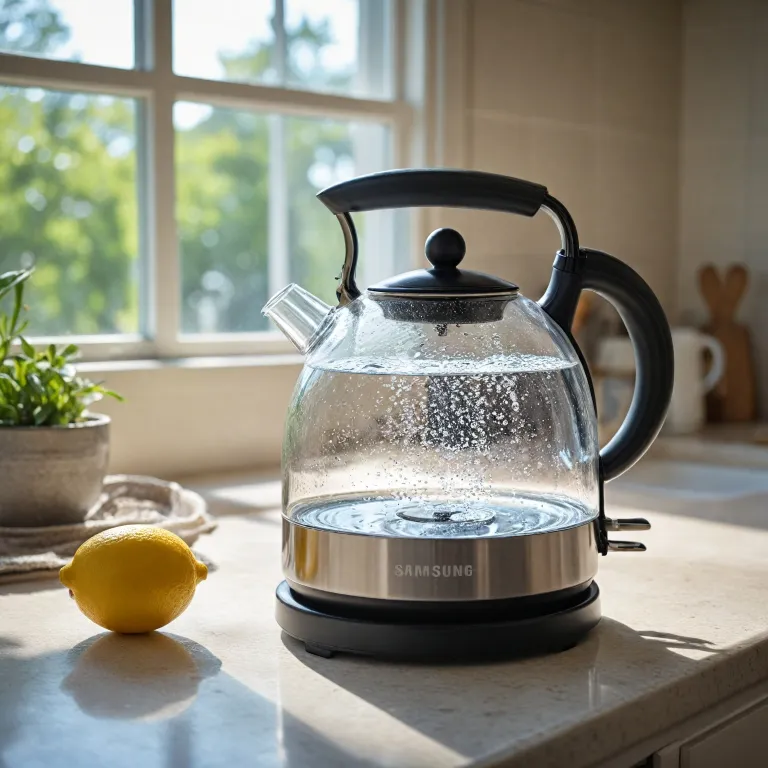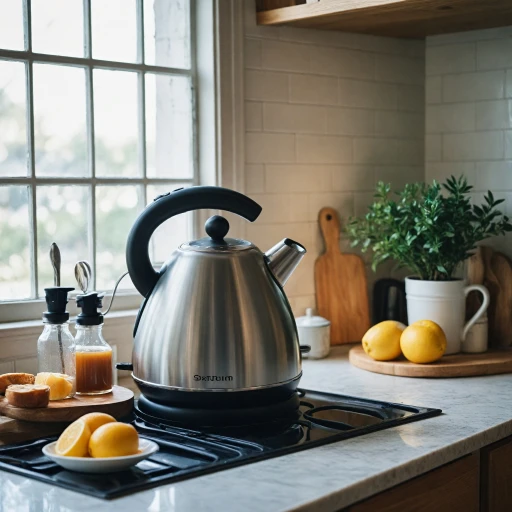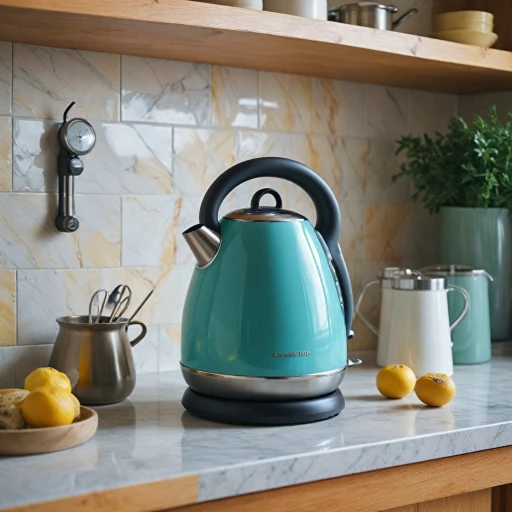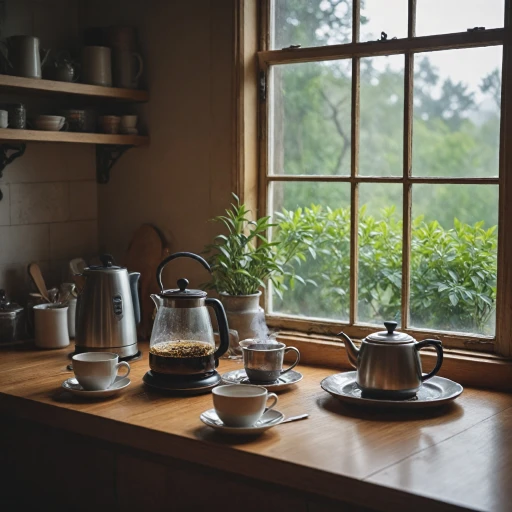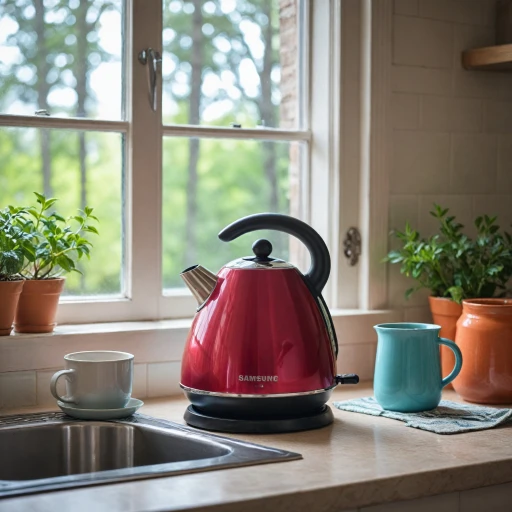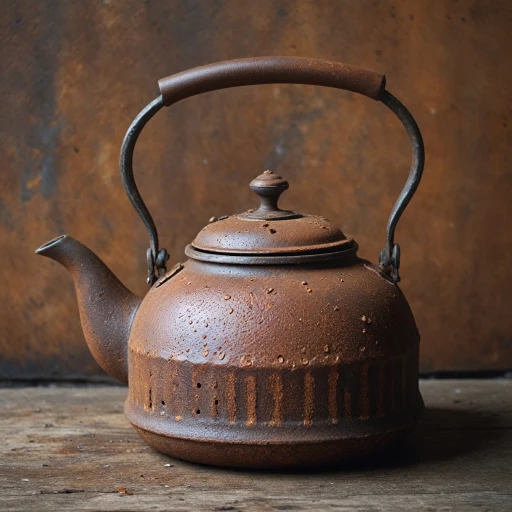
Understanding the Importance of Descaling
The Vital Role of Descaling in Kettle Maintenance
The importance of keeping your electric kettle clean cannot be emphasized enough. Descending into the nuances of descaling, it's clear that removing mineral deposits, particularly limescale, is essential for both the longevity and efficiency of your appliance. This process not only ensures that your kettle functions smoothly but also prevents any unpleasant mineral taste in your water.
Given that limescale is a build-up caused by hard water, it is critical to address this issue as part of your regular kitchen cleaning routine. Neglecting descaling could lead to the kettle taking longer to boil water and using more electricity, which can be quite costly over time.
While some signs that a kettle needs cleaning will be obvious, such as a noticeable residue at the bottom, other indicators might be subtle. The lifespan of your kettle can significantly improve with regular descaling, and when done correctly, using a vinegar-based cleaning method can be particularly effective. This natural acid is highly capable of dissolving limescale deposits.
For those frequently using their kettles, especially in areas with hard water, integrating descaling into your cleaning thread is a wise preventative measure. By sticking to these descale routines, you ensure fresh water at each use and also avoid any bacteria build-up that might arise from neglect.
Signs Your Kettle Needs Descaling
Indicators That Your Kettle Requires a Thorough Cleaning
It's crucial to identify when your kettle is in need of cleaning to maintain its performance and longevity. Keeping an eye out for typical signs can ensure that your kitchen appliance is always in prime condition.
- Visible Limescale and Mineral Deposits: The presence of white, chalky buildup inside your kettle is a clear indication of limescale accumulation. This often occurs in areas with hard water, where minerals such as calcium and magnesium are prevalent. When you spot these deposits, it’s time to descale your kettle.
- Struggle to Boil: If your kettle takes longer to bring water to a boil, the efficiency may be compromised due to limescale hindrance. This can significantly impact its energy consumption, increasing your utility bills over time.
- Strange Taste or Smell: A noticeable change in the taste or smell of water boiled in your kettle can also signal a need for cleaning. This could be due to bacterial accumulation or mineral deposits affecting the taste of beverages prepared with the boiled water.
- Noise During Operation: A kettling sound, or more noise than usual, may mean there is scale buildup on the heating element or base. This sound is a physical manifestation of the challenge water faces when heating across a scaled surface.
These indicators should not be ignored, as they signify the need for a thorough cleaning session. One practical method involves descaling with vinegar, leveraging its natural acid properties to dissolve the accumulated scale effectively. For a comprehensive guide on how to maintain your kettle and enhance its functionality, this understanding of your electric kettle's user guide might be a worthwhile read.
Step-by-Step Guide to Descale with Vinegar
Efficient Method to Use Vinegar for a Sparkling Clean Kettle
Cleaning your kettle effectively involves following a precise method to ensure every bit of limescale and mineral deposits is eliminated. Using vinegar is not only a natural alternative but also a powerful cleaning agent due to its acidic properties. Here's how you can use this household staple to descale your kettle effortlessly:- Prepare the Vinegar Solution: Begin by creating your descaling solution. Combine equal parts of white vinegar and water. This combination, often referred to as vinegar water, forms a potent cleaning solution that's excellent for tackling persistent limescale.
- Add the Solution to the Kettle: Pour the vinegar mixture into the kettle until it reaches the maximum fill line. Ensure you avoid overfilling, which can lead to spills and mess in your kitchen.
- Boil the Kettle: Close the lid and bring the solution to a boil. As you let the water boil, the vinegar works within the kettle to break down mineral deposits. This process is essential for effective cleaning.
- Leave the Solution to Soak: Once the boiling process is complete, switch off the kettle and allow the vinegar solution to sit inside. Leaving it for about 15 to 20 minutes ensures the acidity has ample time to dissolve any stubborn scale.
- Rinse Thoroughly: After soaking, discard the vinegar solution. It’s crucial to thoroughly rinse the kettle with fresh water multiple times to remove any remaining vinegar odor or taste. Refill and boil with fresh water to ensure complete removal of vinegar residues.
- Additional Cleaning Tips: For kettles with more significant limescale issues, you might want to repeat the process. In cases where white vinegar isn't available, a similar solution can be made using citric acid or even lemon juice mixed with water.
Alternative Descaling Methods
Lemon Juice as a Natural Descaler
Lemon juice can be a wonderful alternative to keep your kettle clean and free from limescale, thanks to its natural acidity. Simply mix equal parts of lemon juice with water to create a descaling solution. Pour it into your electric kettle and let it sit for at least thirty minutes to allow the acid to break down mineral deposits.Using Baking Soda for Extra Cleaning Power
Baking soda is another effective alternative. Add a small amount of baking soda to warm water and let it dissolve. This creates a mild abrasive solution that works well for removing stubborn limescale. Apply it directly inside the kettle, scrub gently, and rinse thoroughly with fresh water.Harnessing the Benefits of White Vinegar
Though the focus of this post has been on using vinegar, you can consider occasionally using white vinegar mixed with water for a quick clean. It's strong, so ensure you rinse multiple times with fresh water post-cleaning to avoid any lingering taste or smell.Citric Acid for a Thorough Clean
Citric acid is quite effective for tough limescale buildup. Dissolve citric acid powder in hot water, and pour it into your electric kettle. Allow it to sit for a few hours for a more thorough clean. Rinse well after time to eliminate any residue.Skipping the Main Descaling Agents
In instances where you haven't any of the above descaling agents, using plain water boil can help with mild scale. A regular hot water rinse coupled with gentle cleaning can maintain your appliance well.Preventive Measures to Reduce Scale Build-Up
Reduce Scale Build-Up and Keep Your Kettle Pristine
To maintain a clean kettle and prevent the frequent formation of limescale, proactive measures are essential. Here are some effective strategies to reduce the buildup of mineral deposits in your kitchen companion:- Regular Cleaning: Make it a habit to rinse your kettle with fresh water frequently. This ensures any mineral traces are washed away promptly, minimizing scale formation over time.
- Boil with Vinegar Water: Occasionally boil water with a mixture of 1 part white vinegar and 3 parts water. Let it sit for about 30 minutes, then rinse well. This light cleaning action helps in preventing early limescale adherence.
- Monitor the Water Source: Use filtered water or opt for bottled water, especially if you live in areas with hard water. This simple switch can significantly reduce the mineral content entering your kettle.
- Don't Keep Water Standing: After usage, empty your kettle to avoid leaving water inside for long periods. Stagnant water contributes more to mineral deposits.
- Citrus Acid Alternatives: Substitute white vinegar with citric acid or lemon juice once in a while. These natural acidic solutions perform as effectively to prevent scale.
Common Mistakes to Avoid When Descaling
Avoiding Common Errors while Descaling
When descaling your kettle with solutions like vinegar or citric acid, it's important to sidestep frequent mistakes that can hinder effective cleaning or even damage your kettle over time.- Incorrect Vinegar Ratio: Using an incorrect mixture of vinegar and water can impact the effectiveness of the descaling process. Ensure you mix equal parts of white vinegar with water to create an efficient cleaning solution. Excessive vinegar without enough water could be too harsh, while too much water may dilute the vinegar's cleaning power.
- Inadequate Boiling Time: Carefully follow the boiling time mentioned for your vinegar solution. Letting the mixture boil for just a few minutes, typically about 10 minutes, allows the acid to effectively break down the mineral deposits. Skipping this step may leave limescale residues behind.
- Insufficient Soaking: After boiling, let the solution sit in the kettle. Leaving it for about 30 minutes will ensure thorough cleaning. Rushing this step might not remove all the mineral deposits.
- Skipping Rinse: After descaling, always rinse the kettle with fresh water several times to remove all vinegar residues. Neglecting this step may leave a taste or smell that's unappealing, and it can affect the taste of your boiling water.
- Ignoring Regular Maintenance: Neglecting regular kettle maintenance will allow scale build-up to become more entrenched, making the cleaning process more demanding over time. Refer to our earlier advice on preventive measures to reduce scale build-up for ongoing care.
